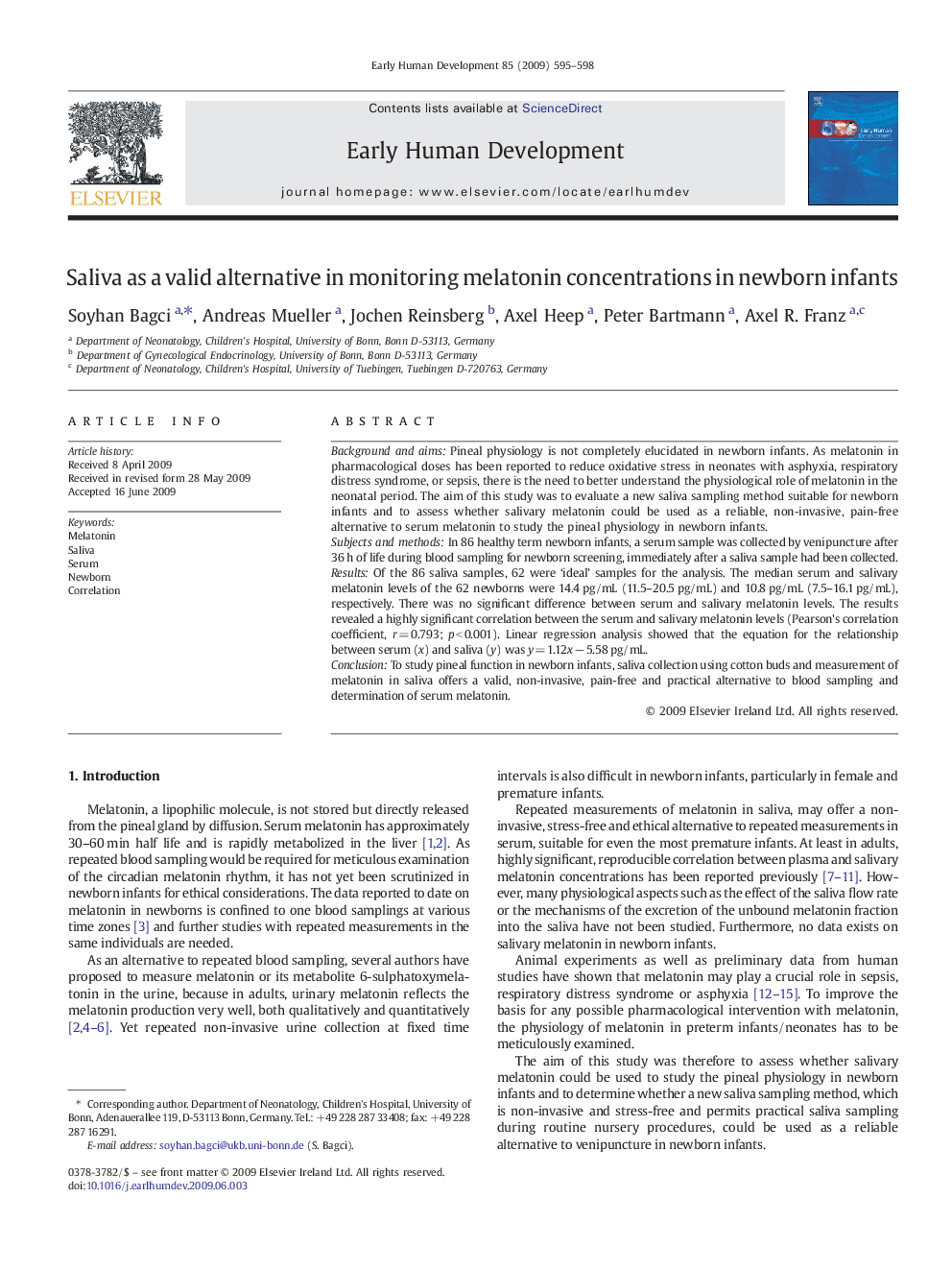| Article ID | Journal | Published Year | Pages | File Type |
|---|---|---|---|---|
| 3918543 | Early Human Development | 2009 | 4 Pages |
Background and aimsPineal physiology is not completely elucidated in newborn infants. As melatonin in pharmacological doses has been reported to reduce oxidative stress in neonates with asphyxia, respiratory distress syndrome, or sepsis, there is the need to better understand the physiological role of melatonin in the neonatal period. The aim of this study was to evaluate a new saliva sampling method suitable for newborn infants and to assess whether salivary melatonin could be used as a reliable, non-invasive, pain-free alternative to serum melatonin to study the pineal physiology in newborn infants.Subjects and methodsIn 86 healthy term newborn infants, a serum sample was collected by venipuncture after 36 h of life during blood sampling for newborn screening, immediately after a saliva sample had been collected.ResultsOf the 86 saliva samples, 62 were ‘ideal’ samples for the analysis. The median serum and salivary melatonin levels of the 62 newborns were 14.4 pg/mL (11.5–20.5 pg/mL) and 10.8 pg/mL (7.5–16.1 pg/mL), respectively. There was no significant difference between serum and salivary melatonin levels. The results revealed a highly significant correlation between the serum and salivary melatonin levels (Pearson's correlation coefficient, r = 0.793; p < 0.001). Linear regression analysis showed that the equation for the relationship between serum (x) and saliva (y) was y = 1.12x − 5.58 pg/mL.ConclusionTo study pineal function in newborn infants, saliva collection using cotton buds and measurement of melatonin in saliva offers a valid, non-invasive, pain-free and practical alternative to blood sampling and determination of serum melatonin.
